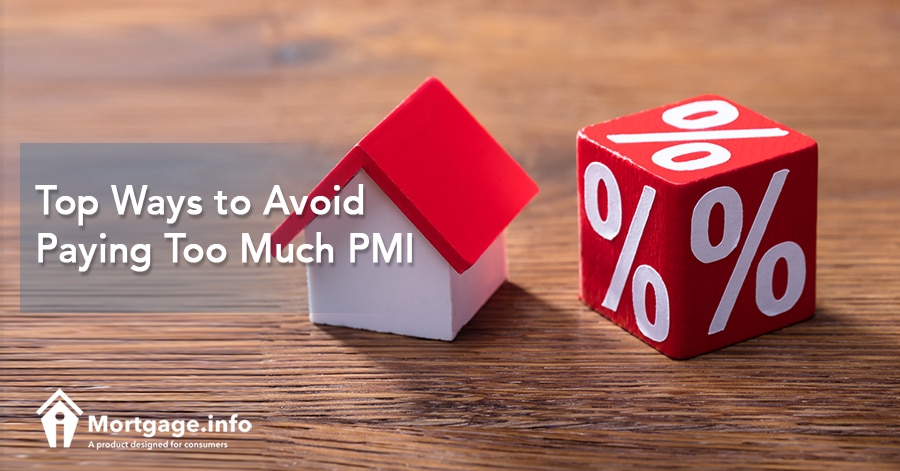
If you put less than 20% down on a home and you use conventional financing you’ll pay PMI or Private Mortgage Insurance. On the one hand, this insurance helps you get conventional financing, but on the other, your payment will be higher because of the PMI.
Looking for Current Mortgage Interest Rates? Click Here.
So how do you avoid paying too much for this insurance? Keep reading for some helpful tips.
Refinance Your Loan
One of the easiest ways to eliminate PMI earlier than the lender predicts you could stop paying is to refinance your loan. In order to avoid PMI altogether, you’ll have to owe less than 80% of the home’s value, though. This could happen with a combination of timely mortgage payments to pay down the principal balance and the home’s appreciation.
If you get to the point that you owe less than 80% of the current value, refinancing will give you an LTV with less than 80%. You won’t be required to take out a new PMI policy, which means you’ve eliminated it from your mortgage. The only PMI you will have paid is the payments you made up until that point.
Request Elimination of the PMI
If you know that your home appreciated recently and you may owe less than 80% of the new value, contact your lender. You may be able to pay for a new appraisal to prove that the home’s value did in fact appreciate. The lender may also require you to prove that you made your last 12 mortgage payments on time and that you don’t have any other liens (mortgages) on the home.
Elimination of PMI before the intended date based on the amortization schedule is up to lender discretion. Keep that in mind as you make the request with your lender. If they turn you down, you can try refinancing to get out of the PMI.
Make Extra Principal Payments
Most loan programs and/or lenders allow you to pay your mortgage down as quickly as you want. Prepayment penalties rarely exist any longer, which allows you to make extra payments whenever you can.
If you are trying to get rid of PMI early, you’ll want to hit that principal balance as hard as you can. If you can make an extra mortgage payment as often as you can. If you need more of a structured plan, try:
- Pay 1/12th of the mortgage payment in addition to your regular mortgage payment each month
- Make one extra mortgage payment each year
- Apply your bonuses or tax refunds to your mortgage to bring the principal balance down
The extra principal payments can help you get to that 80% LTV faster, which is the magic number needed to eliminate PMI.
Click to See the Latest Mortgage Rates.
Improve Your Home
Finally, if you make improvements to your home, you may increase the home’s value. This step alone could help you eliminate PMI. Again, you’ll likely have to pay for a new appraisal to prove to the lender that the home is worth as much as you say it is.
Before you make improvements, though, it’s wise to talk to a real estate professional, whether a real estate agent or appraiser. Discuss the improvements you are thinking of making. The professionals can then let you know what type of return on your investment that you might see. Not all improvements provide an increase in the home’s value, which can defeat the purpose of what you are trying to do.
You’ll need the lender’s approval to eliminate PMI in this case as well. Make sure that your mortgage payments have been made on time and that you don’t have any other liens on your home. These issues make lenders less likely to eliminate PMI because the PMI helps protect the lender should you default on your loan.
If you can’t eliminate PMI early, know that you will get rid of it eventually. If you wait until you naturally hit an 80% LTV, you can request cancellation from the lender. You don’t have to make any other changes to the home, refinance your loan, or pay for an appraisal at this point. If you don’t request cancellation at that point, lenders have to remove the PMI once your LTV is 78% or lower, as it’s the law.
